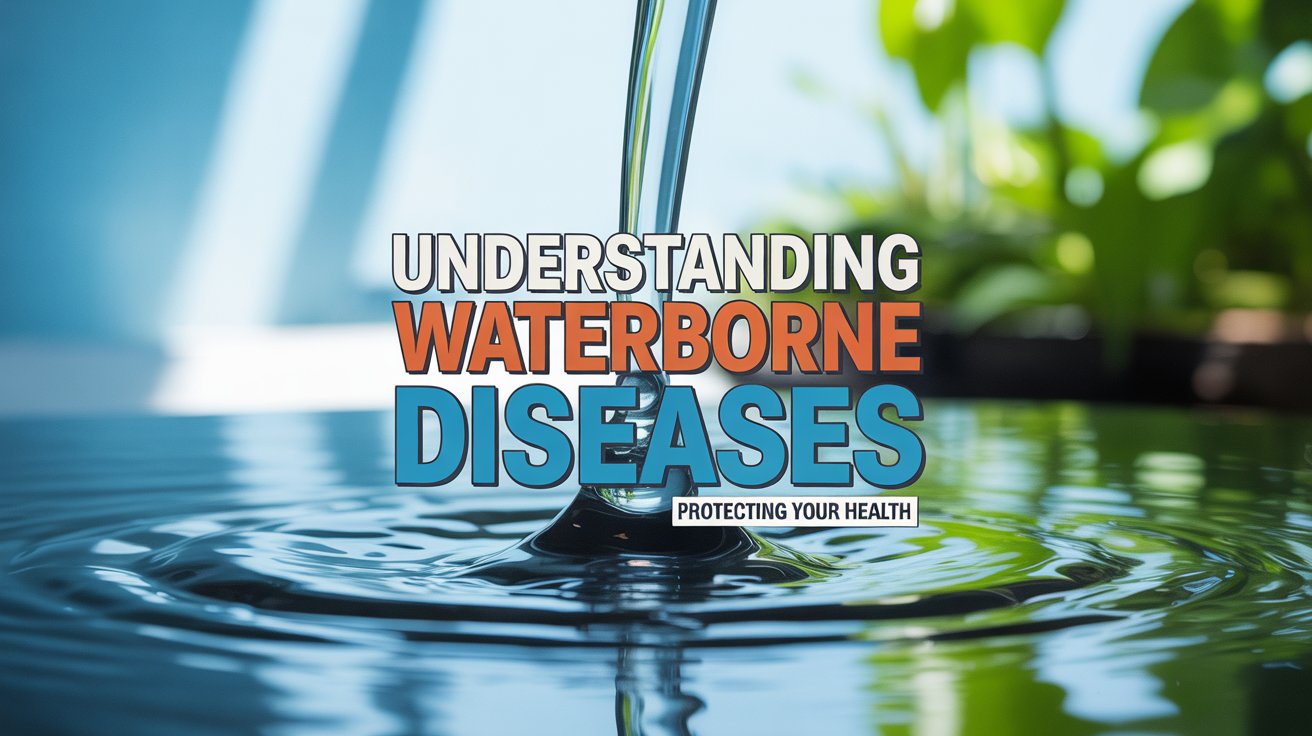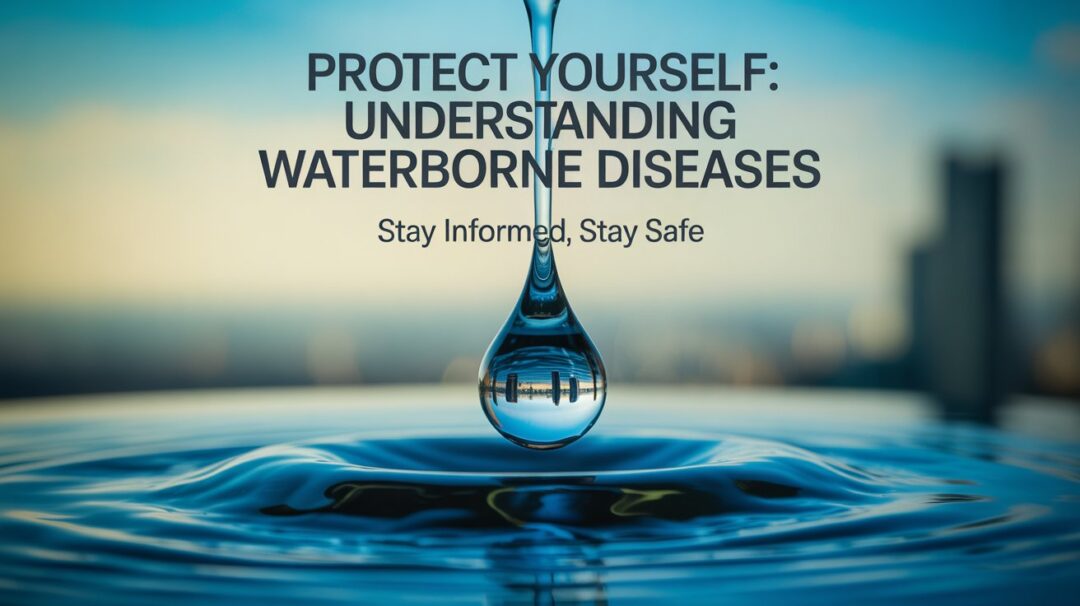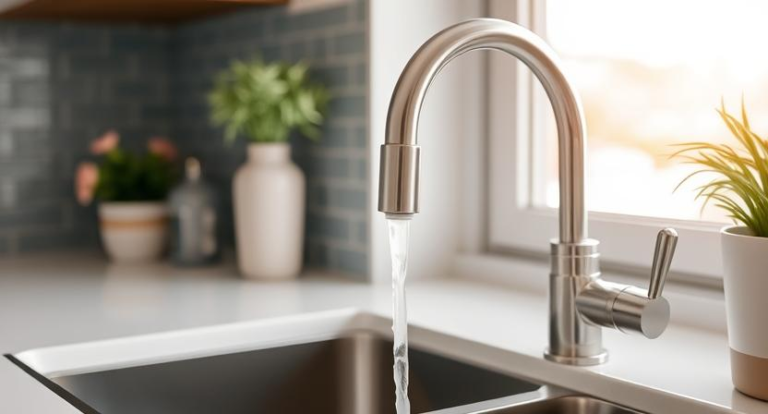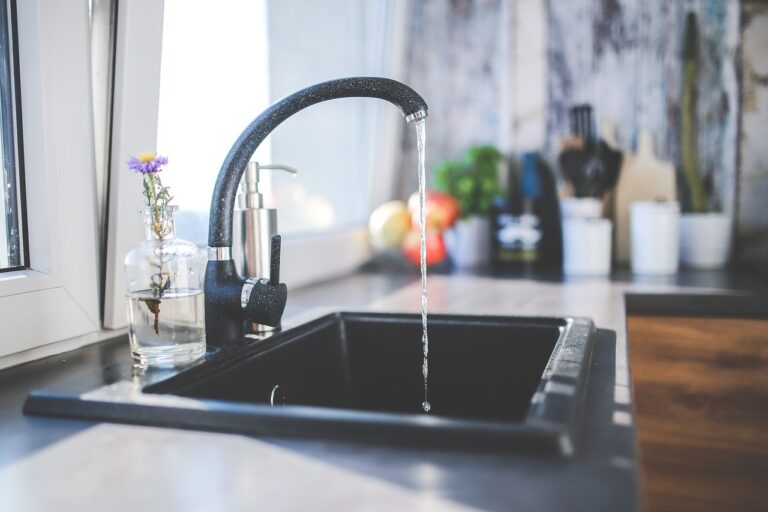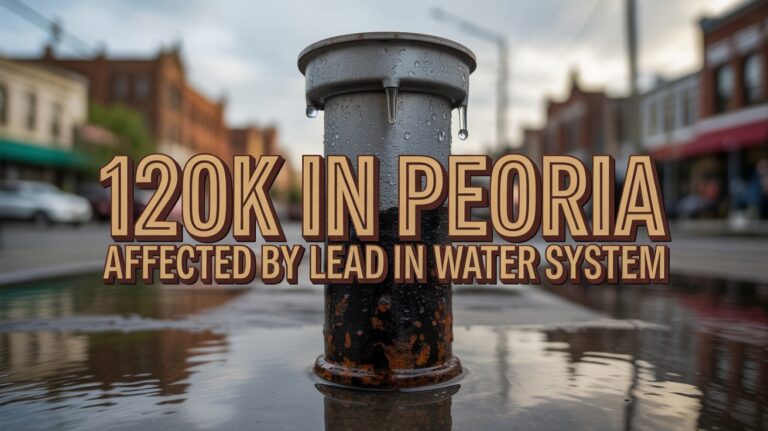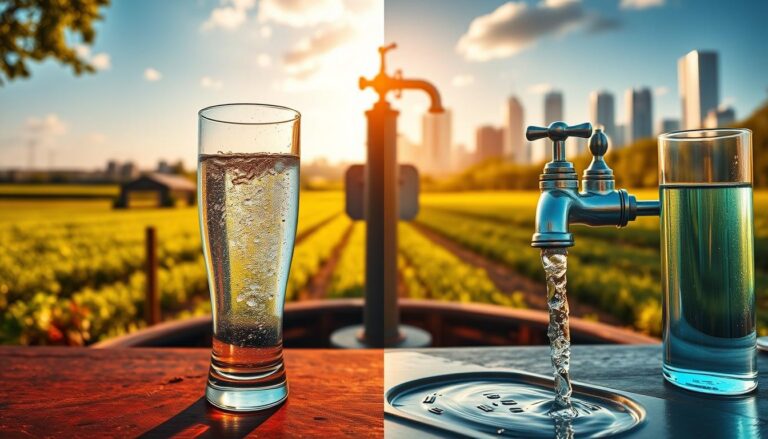Understanding Waterborne Diseases in the United States: Risks, Prevention, and Public Health Data
Waterborne diseases remain a significant public health concern in the United States despite advances in water treatment and infrastructure. Each year, over 7.15 million Americans experience illnesses from contaminated water, resulting in approximately 120,000 hospitalizations and 6,600 deaths. These diseases cost the healthcare system more than $3.3 billion annually. This comprehensive guide explores the causes, prevention strategies, and current data on waterborne diseases across the United States, helping you understand the risks and take effective protective measures for your household and community.
What Are Waterborne Diseases?
Waterborne diseases are illnesses caused by pathogenic microorganisms that are transmitted through contaminated water. These pathogens enter water sources through various routes, including human and animal waste, agricultural runoff, and inadequate water treatment systems. People can become infected when they drink contaminated water, inhale water droplets containing pathogens, or have contact with contaminated water during recreational activities.
Transmission Methods
Waterborne pathogens can be transmitted through several routes:
- Ingestion: Drinking contaminated water or consuming food washed with contaminated water
- Inhalation: Breathing in aerosolized water droplets containing pathogens (common with Legionella bacteria)
- Direct contact: Swimming in or touching contaminated water, which can lead to skin, ear, or eye infections
- Aspiration: Accidentally getting contaminated water into the lungs
Water Exposure Categories
The CDC categorizes waterborne disease exposures into three main types:
- Recreational water: Swimming pools, hot tubs, water parks, lakes, rivers, and oceans
- Drinking water: Public water systems, private wells, and bottled water
- Nonrecreational nondrinking (NRND) water: Water used for agriculture, industry, medical procedures, or encountered in flood waters
Common Waterborne Pathogens in the United States
The United States faces challenges from various waterborne pathogens that cause different types of illnesses. These pathogens fall into three main categories: parasites, bacteria, and viruses.
Parasitic Pathogens
Cryptosporidium
Cryptosporidium (often called “Crypto”) is a microscopic parasite that causes the diarrheal disease cryptosporidiosis. It has a protective outer shell that allows it to survive outside the body for long periods and makes it highly resistant to chlorine disinfection. Crypto is one of the most frequent causes of recreational water illness in the United States, particularly in swimming pools and water parks.
Giardia
Giardia is a parasite that causes giardiasis, characterized by diarrhea, abdominal cramps, bloating, and nausea. It’s commonly found in untreated water sources like lakes and streams, earning it the nickname “beaver fever” because these animals can serve as reservoirs for the parasite. Giardia is a leading cause of waterborne disease outbreaks associated with drinking water from private wells and small community systems.

Bacterial Pathogens
Legionella
Legionella bacteria cause Legionnaires’ disease, a serious type of pneumonia, and Pontiac fever, a milder illness. These bacteria naturally occur in freshwater environments but become a health concern when they grow and spread in human-made water systems like cooling towers, hot tubs, plumbing systems, and decorative fountains. Legionella has emerged as a leading cause of reported waterborne disease outbreaks in the United States.
Nontuberculous Mycobacteria (NTM)
NTM are environmental bacteria found in water and soil that can cause pulmonary disease, particularly in people with underlying lung conditions. These bacteria can survive in drinking water distribution systems and premise plumbing, and are responsible for the highest number of hospitalizations and deaths from waterborne diseases in the US.
E. coli and Other Bacteria
Escherichia coli (E. coli), particularly Shiga toxin-producing strains, Campylobacter, Salmonella, and Shigella are bacterial pathogens that can contaminate water sources through fecal matter. These bacteria typically cause gastrointestinal illness with symptoms including diarrhea, abdominal cramps, nausea, and vomiting. They’re commonly associated with untreated recreational water and contaminated drinking water sources.
Viral Pathogens
Norovirus is the most common viral cause of waterborne disease outbreaks in the United States. This highly contagious virus causes acute gastroenteritis with symptoms including diarrhea, vomiting, nausea, and stomach pain. Norovirus outbreaks have been linked to both recreational water venues and drinking water systems, particularly when contaminated by sewage.
Biofilm-Associated Pathogens
Biofilms are communities of microorganisms that attach to surfaces and form a protective layer. Pathogens like Legionella, NTM, and Pseudomonas can colonize biofilms in water systems, where they’re protected from disinfectants. These biofilm-associated pathogens are responsible for the majority of hospitalizations and deaths from waterborne diseases in the United States.
Analysis of CDC Waterborne Disease Data
According to CDC data, the landscape of waterborne diseases in the United States has shifted significantly over the past century. While historical threats like typhoid and cholera have been largely controlled through water treatment and sanitation, new challenges have emerged.
Current Disease Burden
The CDC estimates that waterborne pathogens cause over 7.15 million illnesses, 120,000 hospitalizations, and 6,600 deaths annually in the United States. The economic impact is substantial, with direct healthcare costs exceeding $3.3 billion per year. This burden is not evenly distributed across all types of waterborne diseases or exposure routes.
| Water Exposure Route | Annual Illnesses | Hospitalizations | Deaths | Healthcare Costs |
| Recreational Water | 5.61 million | 42,300 | 1,290 | $1.07 billion |
| Drinking Water | 1.13 million | 47,700 | 3,300 | $1.39 billion |
| NRND Water | 407,000 | 27,900 | 2,040 | $871 million |
| Total | 7.15 million | 117,900 | 6,630 | $3.33 billion |
Table 1: Estimated annual burden of waterborne diseases in the United States by exposure route (2014 data)
Changing Patterns of Waterborne Disease
The CDC has documented a significant shift in the types of waterborne diseases affecting Americans. While gastrointestinal illnesses from enteric pathogens were historically the primary concern, today’s landscape includes respiratory illnesses, skin infections, and systemic diseases caused by opportunistic pathogens that grow in water systems.
Leading Causes of Illness
The most common waterborne illnesses by number of cases include:
- Acute otitis externa (swimmer’s ear) – 4.67 million cases
- Norovirus infection – 1.33 million cases
- Giardiasis – 415,000 cases
- Cryptosporidiosis – 322,000 cases
- Campylobacteriosis – 171,000 cases
Leading Causes of Death
The pathogens responsible for most waterborne disease deaths include:
- Nontuberculous mycobacteria – 3,800 deaths
- Legionella – 995 deaths
- Pseudomonas (pneumonia and septicemia) – 1,076 deaths
- Acute otitis externa – 219 deaths
- Vibrio species – 54 deaths
Access the Complete CDC Waterborne Disease Report
Get detailed statistics, trends, and analysis of waterborne diseases in the United States from the CDC’s comprehensive surveillance report.
Outbreak Surveillance
The CDC tracks waterborne disease outbreaks through the National Outbreak Reporting System (NORS). During 2015-2020, public health officials from 28 states reported 214 outbreaks associated with drinking water, resulting in at least 2,140 cases of illness, 563 hospitalizations, and 88 deaths.
“Today, we are realizing that waterborne diseases are responsible for many different types of illnesses—including respiratory illnesses, neurological illnesses, skin problems, gastrointestinal illnesses, and bloodstream infections. People are infected by waterborne germs not just when they drink water, but also when they breathe in contaminated water droplets or when water gets in their ears or nose.”
State-Specific Waterborne Disease Case Studies
Waterborne disease patterns vary significantly across different states due to factors such as climate, water infrastructure, population density, and local regulations. Examining state-specific data provides valuable insights into regional challenges and effective prevention strategies.
Minnesota: Waterborne Disease Outbreaks and Response
Minnesota has a robust waterborne disease surveillance system that monitors and responds to outbreaks across the state. The Minnesota Department of Health tracks cases of waterborne illnesses and investigates outbreaks to identify sources and prevent further spread.
Recent Minnesota Outbreaks
Minnesota has experienced several notable waterborne disease outbreaks in recent years:
- Cryptosporidiosis outbreaks linked to public swimming pools and water parks, particularly during summer months
- Legionnaires’ disease clusters associated with cooling towers and building water systems in urban areas
- E. coli contamination in rural well water following heavy rainfall and flooding events
- Norovirus outbreaks at lakeside recreational areas during peak tourism seasons
| Pathogen | Cases (Annual Average) | Primary Water Source | Seasonal Peak |
| Cryptosporidium | 375 | Recreational water | Summer (Jun-Aug) |
| Giardia | 625 | Surface water, wells | Late summer/Fall |
| Legionella | 115 | Building water systems | Summer/Early fall |
| E. coli (STEC) | 225 | Private wells, surface water | Spring/Summer |
Table 2: Common waterborne pathogens in Minnesota (Data from Minnesota Department of Health)
Wisconsin: Comprehensive Prevention Strategies
Wisconsin has developed extensive prevention strategies to address waterborne diseases, particularly given the state’s numerous lakes, rivers, and recreational water venues. The Wisconsin Department of Health Services implements a multi-faceted approach to protect public health.
Wisconsin’s Prevention Framework
Wisconsin’s approach to waterborne disease prevention includes:
Monitoring & Surveillance
- Routine water quality testing at public beaches and swimming areas
- Mandatory reporting of waterborne disease cases by healthcare providers
- Environmental sampling during suspected outbreaks
- Collaboration with local health departments for early detection
Regulation & Enforcement
- Strict standards for public water systems and recreational facilities
- Regular inspections of pools, hot tubs, and water parks
- Certification requirements for water system operators
- Enforcement of water quality violations
Education & Outreach
- Public awareness campaigns about safe swimming practices
- Resources for private well owners on testing and maintenance
- Training for facility operators on preventing waterborne illness
- Community workshops on recognizing and reporting water issues
Wisconsin’s Blue-Green Algae Monitoring
Wisconsin actively monitors harmful algal blooms that can produce toxins dangerous to humans and animals. The state collects information about human and animal illnesses resulting from exposure to blue-green algae in Wisconsin lakes and rivers. Residents are encouraged to report possible algae-related illnesses to help track and prevent these non-infectious waterborne health threats.
Indiana: Waterborne Disease Monitoring Systems
Indiana has established comprehensive monitoring systems to track and respond to waterborne diseases across the state. The Indiana Department of Health’s Division of Environmental Public Health leads efforts to prevent waterborne illnesses through surveillance, investigation, and public education.
Key Components of Indiana’s Monitoring System
- Syndromic surveillance: Monitoring emergency department visits for symptoms consistent with waterborne illnesses
- Laboratory reporting: Required reporting of confirmed waterborne pathogen cases from clinical laboratories
- Environmental sampling: Regular testing of public water systems and recreational water venues
- Outbreak investigation: Rapid response teams that investigate clusters of waterborne illness
- Cross-agency collaboration: Partnerships between health, environmental, and water management agencies
| State | Primary Monitoring Focus | Unique Approach | Notable Success |
| Minnesota | Recreational waters, private wells | Beach monitoring program with real-time alerts | 50% reduction in recreational water outbreaks since 2010 |
| Wisconsin | Blue-green algae, drinking water | Citizen science algal bloom reporting | Comprehensive harmful algal bloom response system |
| Indiana | Gastrointestinal illness, Legionella | Syndromic surveillance system | Early detection of community clusters before confirmed diagnosis |
Table 3: Comparison of state waterborne disease monitoring approaches
Access Your State’s Waterborne Disease Resources
Find state-specific information on waterborne disease prevention, reporting, and water quality in your area.
Prevention Guidelines for Households and Communities
Preventing waterborne diseases requires a multi-layered approach that includes individual actions, household practices, and community-wide measures. By implementing these prevention strategies, you can significantly reduce the risk of waterborne illnesses for yourself and your family.
Household Prevention Measures
Drinking Water Safety
- Private well testing: Test well water annually for bacteria, nitrates, and other contaminants
- Water filters: Use NSF-certified filters appropriate for your water quality concerns
- Plumbing maintenance: Flush rarely used faucets weekly to prevent stagnation
- Water heater management: Set water heater temperature to at least 120°F (49°C) to inhibit bacterial growth
- Emergency preparedness: Store clean water for emergencies (one gallon per person per day)
Recreational Water Safety
- Shower before swimming to remove germs and contaminants from your body
- Avoid swallowing water while swimming in pools, lakes, or rivers
- Check inspection scores for public pools and water parks before visiting
- Stay out of the water if you have diarrhea or open wounds
- Take children on bathroom breaks every hour when swimming
Symptom Checklist: When to Suspect a Waterborne Illness
Contact your healthcare provider if you experience these symptoms after water exposure:
Gastrointestinal Symptoms:
- Diarrhea (especially if watery or bloody)
- Abdominal cramps or pain
- Nausea and vomiting
- Fever
Other Symptoms:
- Respiratory problems (cough, shortness of breath)
- Skin rashes or infections
- Ear pain or discharge
- Eye redness or irritation
Community Prevention Strategies
Effective prevention of waterborne diseases requires coordinated community efforts involving public health agencies, water utilities, building managers, and the public.
Public Water Systems
- Regular monitoring and testing of water quality
- Maintaining appropriate disinfection levels throughout distribution systems
- Upgrading aging infrastructure to prevent contamination
- Implementing source water protection programs
- Public notification of water quality issues
Building Water Management
- Developing and implementing water management programs
- Regular maintenance of cooling towers and water features
- Preventing water stagnation in plumbing systems
- Monitoring water temperature and disinfectant levels
- Training staff on water system maintenance
Recreational Water Venues
- Following CDC’s Model Aquatic Health Code guidelines
- Maintaining proper disinfection and filtration
- Regular testing of water quality parameters
- Staff training on recognizing and responding to contamination
- Public education on healthy swimming behaviors
Develop a Water Management Program
Building owners and managers can prevent Legionella and other waterborne pathogens by implementing a water management program. Get CDC’s toolkit to develop your own program.
Special Considerations for Vulnerable Populations
Certain groups face higher risks from waterborne diseases and may need additional precautions:
- Immunocompromised individuals: May need to take extra precautions with drinking water, such as using filters or boiling water
- Young children: More susceptible to recreational water illnesses and may need closer supervision around water
- Older adults: At higher risk for severe outcomes from Legionnaires’ disease and other waterborne infections
- Pregnant women: Should be cautious about water quality due to potential risks to the developing fetus
- People with underlying health conditions: May experience more severe symptoms from waterborne infections
Emerging Challenges in Waterborne Disease Prevention
Despite progress in water treatment and public health surveillance, the United States faces several emerging challenges in preventing waterborne diseases. These challenges require innovative approaches and coordinated responses from multiple sectors.
Climate Change Impacts
Climate change is altering the landscape of waterborne diseases in several ways:
- Increased flooding events: Heavy rainfall and flooding can overwhelm water and sewage systems, leading to contamination of drinking water sources and increased exposure to pathogens
- Rising water temperatures: Warmer water temperatures can promote the growth of certain pathogens, including Vibrio species and harmful algal blooms
- Drought conditions: Droughts can concentrate contaminants in water sources and lead to water shortages that compromise hygiene practices
- Changing precipitation patterns: Altered rainfall patterns affect runoff, groundwater recharge, and the transport of pathogens in the environment
- Geographic shifts in disease patterns: Changing climate conditions may allow waterborne pathogens to emerge in regions where they were previously uncommon
“Weather, geographic factors, and drinking-water sources all influence outbreaks of waterborne infectious diseases in the United States, and their finding have important implications amid the heavier floods, more extreme droughts, and greater seasonal precipitation tied to climate change.”
Aging Infrastructure Challenges
Much of America’s water infrastructure was built in the early to mid-20th century and is now reaching the end of its expected lifespan. This aging infrastructure presents several challenges:
Public Water Systems
- Deteriorating pipes that can crack or break, allowing contaminants to enter
- Outdated treatment facilities that may not effectively remove emerging contaminants
- Inadequate capacity to meet growing population demands
- Limited resources for maintenance and upgrades, particularly in smaller communities
Building Water Systems
- Complex premise plumbing systems that can harbor biofilms and pathogens
- Older buildings with lead pipes or fixtures that can contaminate water
- Inadequate temperature control in hot water systems
- Limited oversight of building water system maintenance
Emerging Pathogens and Changing Disease Patterns
The landscape of waterborne diseases continues to evolve as new pathogens emerge and known pathogens develop resistance or adapt to changing conditions:
- Increasing prevalence of biofilm-associated pathogens: Legionella, NTM, and Pseudomonas are becoming more significant causes of waterborne disease
- Antimicrobial resistance: Some waterborne bacteria are developing resistance to antibiotics, making infections more difficult to treat
- Emerging pathogens: Newly recognized waterborne pathogens may pose additional threats to public health
- Changing exposure patterns: New water uses and technologies create novel exposure routes for waterborne pathogens
Future Directions in Waterborne Disease Prevention
Addressing these emerging challenges requires innovative approaches and coordinated efforts across multiple sectors:
Enhanced Surveillance
- Expanding pathogen-specific monitoring in water systems
- Implementing syndromic surveillance for early outbreak detection
- Utilizing molecular methods for rapid pathogen identification
- Developing predictive models for outbreak risk assessment
Infrastructure Improvements
- Investing in water infrastructure renewal and upgrades
- Implementing water-efficient technologies to reduce waste
- Developing innovative pipe materials resistant to biofilm formation
- Creating resilient water systems that can withstand climate impacts
Policy and Education
- Strengthening regulations for building water management
- Expanding education on waterborne disease prevention
- Developing targeted interventions for vulnerable populations
- Fostering collaboration between public health, environmental, and water management sectors
Download Waterborne Disease Prevention Checklist
Get a comprehensive checklist for protecting your household from waterborne diseases. Includes steps for drinking water safety, recreational water precautions, and emergency preparedness.
Conclusion
Waterborne diseases remain a significant public health challenge in the United States despite advances in water treatment and infrastructure. The landscape of these diseases has shifted from primarily gastrointestinal illnesses caused by enteric pathogens to include respiratory diseases, skin infections, and systemic illnesses caused by opportunistic pathogens that grow in water systems.
The burden of waterborne diseases is substantial, with over 7.15 million illnesses, 120,000 hospitalizations, and 6,600 deaths annually, costing the healthcare system more than $3.3 billion. Biofilm-associated pathogens like Legionella and nontuberculous mycobacteria have emerged as leading causes of hospitalizations and deaths, while recreational water exposure accounts for the largest number of illnesses.
Preventing waterborne diseases requires a multi-faceted approach that includes individual actions, household practices, community-wide measures, and policy initiatives. As we face emerging challenges from climate change, aging infrastructure, and evolving pathogens, continued investment in water systems, surveillance, research, and public education will be essential to protect public health and ensure safe water for all Americans.
Stay Informed About Waterborne Disease Prevention
Get the latest information, resources, and updates on waterborne disease prevention from the CDC’s Healthy Water program.

